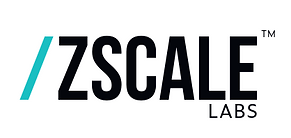
Hypergraph Computation vs. Hyperdimensional Computing
5 days ago
2 min read
1
0
0
Hypergraph computation and hyperdimensional computing (HDC) are related approaches that both aim to represent and process complex, high-dimensional data, but they have some key differences:
Hyperdimensional Computing (HDC)
Uses very high-dimensional vectors (typically 10,000+ dimensions) called hypervectors to represent data and concepts.
Employs simple algebraic operations like binding, bundling, and permutation to manipulate these hypervectors.
Aims to mimic certain properties of neural activity in the brain, like distributed representation and robustness.
Focuses on encoding information holistically across all dimensions of the hypervector.
Hypergraph Computation
Represents data using hypergraphs, which are generalizations of graphs where edges can connect on more than two vertices. (Vertices are discrete points in a graph where edges meet. In traditional graphs, vertices typically represent individual entities, and edges connect pairs of vertices. However, in hypergraphs, the concept of vertices is extended to allow for more complex relationships.)
Aims to capture higher-order relationships in data that cannot be represented by simple pairwise connections.
Develops algorithms and methods specific to hypergraph structures, like hypergraph neural networks.
Often used to model complex systems where multi-way interactions are important.
Connections and Similarities
Both approaches deal with high-dimensional representations of data.
They both aim to capture complex relationships and patterns that may not be easily represented in traditional low-dimensional spaces.
Some research combines aspects of both approaches. For example, the GrapHD method uses hyperdimensional computing techniques to represent graph-based information.
Both can be applied to similar problem domains, such as machine learning, pattern recognition, and data analysis.
They both offer potential advantages in terms of computational efficiency and robustness compared to traditional methods.
Conclusion
While hypergraph computation and hyperdimensional computing are distinct approaches, they share the goal of developing more powerful and flexible ways to represent and process complex data. As research in these areas progresses, we may see more integration and cross-pollination of ideas between the two fields.
#hyperdimensionalcomputing #hypergraph
+++
Citations:
https://library.oapen.org/bitstream/id/13b6d706-7ad5-4880-914d-3a8f03719f58/978-981-99-0185-2.pdf
https://research.ibm.com/blog/in-memory-hyperdimensional-computing
https://www.frontiersin.org/journals/neuroscience/articles/10.3389/fnins.2022.757125/full
https://www.wired.com/story/hyperdimensional-computing-reimagines-artificial-intelligence/
https://www.nsf.gov/awardsearch/showAward?AWD_ID=2147640&HistoricalAwards=false




